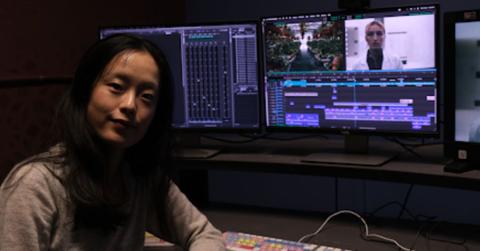 NEWS
NEWSBeyond the Cut: How Ji Ye Won Crafts Festival-Recognized Stories

March 16 2025, Published 1:37 a.m. ET
Many editors approach their work as a technical process—arranging shots, refining continuity, and ensuring smooth transitions. For Ji Ye Won, it is more than piecing together footage—it is an act of storytelling that shapes a film's emotional and narrative foundation.
Rather than simply assembling scenes, she listens to what the footage reveals, allowing the story to emerge organically. Her approach is meticulous, rooted in an intuitive understanding of rhythm, pacing, and the delicate balance between silence and sound.
Intuitive Editing vs. Formulaic Editing
Ji Ye Won believes in letting the footage guide her rather than forcing a rigid structure onto a film. Instead of following a prescribed formula, she studies performances, small gestures, and unscripted moments that can elevate a scene.
This philosophy was key in “Evan Ever After,” where she worked to move beyond the media narrative of Evan’s election as Homecoming Queen and focus instead on the deeply human moments that made her journey unique. Through careful selection and sequencing, Ji Ye ensured that the film documented events while resonating emotionally with audiences.
Editorial Decision-Making: Choosing What Matters Most
Every edit is a decision—what to include, emphasize, and leave out. In “Evan Ever After,” Ji Ye Won and the directors spent countless hours determining which footage best captured the heart of the story. A bold choice was made to center the film around her mother’s evolving journey of understanding and support. These editorial decisions helped craft a secondary narrative that added layers to the film.
This instinct guided her work on “Stuck,” a surreal film that balances comedy and psychological drama. Ji Ye’s editing choices ensured that the film’s absurd elements felt grounded while the emotional beats remained intact. By fine-tuning timing and pacing, she controlled the tension and comedic rhythm, allowing both elements to coexist harmoniously.
Want OK! each day? Sign up here!
Balancing Structure and Emotion in Narrative Film
For Ji Ye Won, editing is where characters come to life. The right cut can turn a quiet moment into an unforgettable one, while a subtle pause can shift the entire tone of a conversation. In “Stuck,” she approached each scene with an awareness of how pacing shapes emotional impact. A fraction of a second added to a character’s hesitation could make the difference between humor and discomfort, while lingering on a reaction shot could add depth of meaning without a single word being spoken.
Ji Ye Won makes sure that films function structurally and resonate emotionally, leaving a lasting impact on audiences. It comes as no surprise that projects have been featured in numerous festivals.
AI as a Tool for Human Storytelling
While Ji Ye Won embraces technological advancements, she views artificial intelligence (AI) as a complement rather than a replacement for human intuition. She integrates AI-driven transcription and translation tools into her workflow, particularly for multilingual projects, ensuring that cultural diversity and emotional beats remain intact across languages.
Her approach to AI reflects her larger philosophy: technology should serve the creative process, not dictate it. By streamlining elements like dialogue accuracy and subtitle timing, she allows herself more time to focus on the artistic aspects of editing.
An Editor’s Invisible Influence
Great editing is not meant to draw attention to itself—it is meant to disappear, allowing the audience to become fully immersed in a film’s world. Ji Ye Won understands that her role is not to impose but to enhance, shaping each project with care and restraint.
Whether crafting festival-winning documentaries or bold narrative films, Ji Ye Won’s work renders stories told with clarity and heart. As the entertainment industry continues to evolve, Ji Ye’s approach shows that behind every great film is an editor who understands that storytelling is not just about what is seen but about what is felt.


